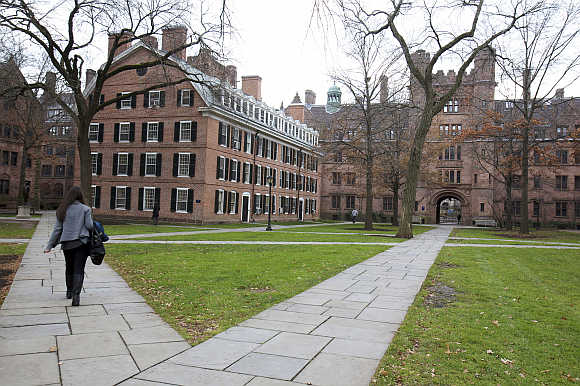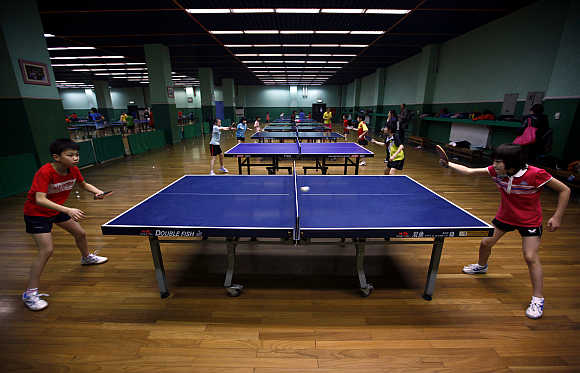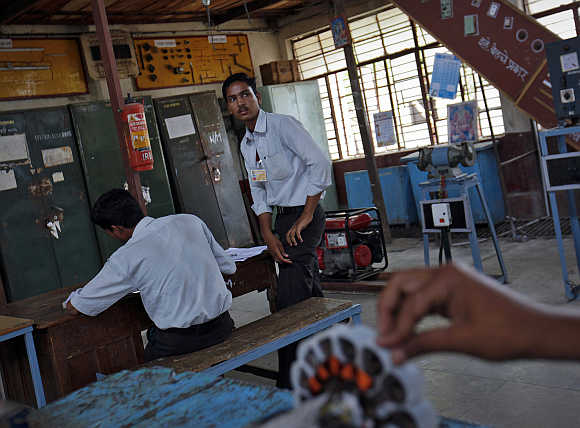 | « Back to article | Print this article |
India faces growing problem of more skilled workers than jobs
In 10 years, India will have two college-trained aspirants for every job.
Of the major emerging markets, the fastest annual talent pool growth will be in India (7.3 per cent), followed by Brazil (5.6 per cent), Indonesia (4.9 per cent), Turkey (4.7 per cent) and China (4.6 per cent) in the next 10 years.
A hugely educative study done by Oxford Economics also shows the sharp contrast in many developed countries, particularly in Europe. The next decade in these countries will see a further slowdown in population growth and continued aging of the workforce.
Paradoxically, the biggest losers may be economies that have made the greatest strides in tapping potential talent by increasing access to education and raising labour market participation since they will have less scope to boost talent supply.
Click NEXT to read more...
India faces growing problem of more skilled workers than jobs
At 1.4 per cent and 1.3 per cent a year, respectively, the US and Canada will lead the G7 in annual talent growth, while France (0.9 per cent), UK (0.7 per cent), Italy (0.5 per cent), Japan (0.4 per cent) and Germany (zero per cent) will lag.
The impact of the global distribution of talent will be dramatic, says the study done in collaboration with Towers Watson and a host of leading companies in the world. There’s more good news for developing economies. Already, over half the world’s college graduates (54 per cent) come from the top emerging markets (the E7: Brazil, China, India, Indonesia, Mexico, Russia and Turkey), compared with 46 per cent from the industrialised world (the G7: Canada, France, Germany, Italy, Japan, UK and US).
Click NEXT to read more...
India faces growing problem of more skilled workers than jobs
Over the next decade, the percentage of college graduates will rise to 60 per cent in the E7 - some 217 million workers, as opposed to 143 million in the developed world. Perhaps most tellingly, China will overtake the US as the country with the largest single pool of educated talent as a demographic bulge, accelerating economic growth and technology-enabled training will also contribute to the dramatic rise in the number of college-trained talent developing markets are expected to produce.
In fact, eight of the top 10 countries likely to boast the largest talent surpluses a decade from now will be in the developing world, led by India, Indonesia, Colombia and South Africa.
Click NEXT to read more...
India faces growing problem of more skilled workers than jobs
Ironically, that bit of good news should be worrying India’s policymakers because it means more skilled workers will be produced than job opportunities will appear. While India’s pool of college-educated talent is expected to rise more than 45 million in 10 years, it will exceed that which can be absorbed by the Indian economy. In fact, in 10 years, India will have two college-trained aspirants for every job opportunity.
Logically, China should have also shared the same problem. But it won’t. The projected balance of supply and demand for skilled labour shows China in balance: Its heavy investment in education will enable it to meet its talent needs and sustain its rapid economic development, even as its population growth levels off and its population begins to age.
Click NEXT to read more...
India faces growing problem of more skilled workers than jobs
Its projected 4.6 per cent annual increase in college educated talent will roughly match its economic growth. The issue for employers will be how to foster their loyalty and engagement longer-term. However, the Oxford Economics study, done with a global clientele (multinational companies) in mind, sees an opportunity in the projected talent surplus in India since wage premium for talent will compress, allowing companies to invest in new technologies and business models that will fuel growth.
Thus, workers in countries such as India could become critical players in future waves of innovation since there is no ironclad rule mandating that areas such as the Silicon Valley in the US will be the only home of future innovation and job creation in industries ranging from life sciences to renewable energy and even space exploration.
Click NEXT to read more...
India faces growing problem of more skilled workers than jobs
With the digital divide now operating in reverse, the South, rather than the North, could become the major source of technical talent a decade from now. Moreover, as the flow of capital and technology becomes increasingly frictionless across the world, centres of innovation and product development are likely to spring up in previously unheralded regions.
This is even more relevant considering that labour shortages are projected to appear in many mature markets, in part because of their aging populations and because much of their population is already relatively well-educated, offering less room for meaningful improvement.
Click NEXT to read more...
India faces growing problem of more skilled workers than jobs
Faced with recession and budget constraints in the wake of the 2008 economic crisis, many of these countries will fall further behind in the race between education and technology. All this should be music to the ears of those who worry about the job opportunities of future graduates in India. But what the Oxford Economics study is silent about is their employability.
After all, multinationals will come to India for low-skilled jobs at reduced wages only up to a point. For even engineering graduates, for example, the employability ratio is pathetic.
Click NEXT to read more...
India faces growing problem of more skilled workers than jobs
India produces 400,000 engineers a year. But industry body Nasscom found only one in four of these engineering graduates were employable. The rest were deficient in the required technical skills, fluency in English or ability to work in a team or deliver basic oral presentations. There are countless stories of how companies are visiting engineering colleges in interior areas to add to their basket of employable graduates but are returning empty-handed.
So will multinationals come in droves to take advantage of India’s projected talented surplus of two graduates for one job? The answer to that question is obvious, unless dramatic changes take place in the country’s educational and training facilities over the next decade.








